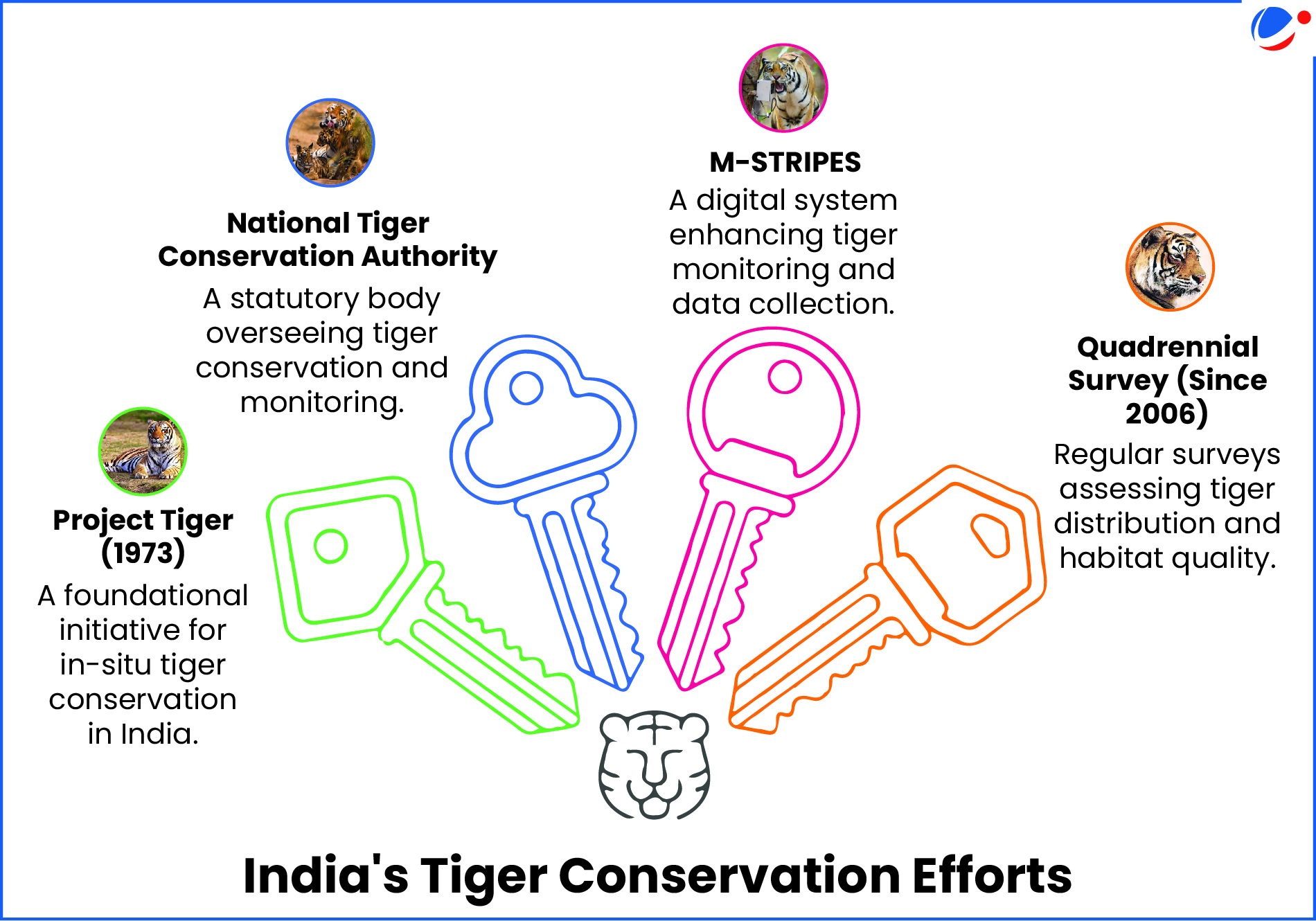Tigers, once eradicated from over 90% of their historic range is on the way of recovery with India holding ~75% of the global tiger population.
- In 2022, India had successfully doubled its tiger population (also known as the TX2 goal), thereby, achieving the Global Tiger Recovery Program's target, despite having some of the highest human densities.
Key Findings of the Study
- Tiger-occupied areas increased: By 30% from 2006 to 2018, with colonization of over 40,000 km².
- Protected Areas: 85% of tiger-occupied grids were within protected areas.
- Human-Tiger Coexistence: 45% of tiger habitats are shared with about 60 million people.

Factors Behind Conservation Success
- Land Sparing and Land Sharing: A balanced approach combining protected, human-free areas and shared landscapes with local communities.
- Sociopolitical Stability: It fostered wildlife conservation, evidenced by tiger recovery in reserves post-conflict control. E.g., Nagarjunsagar-Srisailam, Amrabad, and Similipal.
- Community Attitudes: Not simply less human density but community tolerance to large carnivores led to Tiger recovery. E.g., Recovery was seen in Madhya Pradesh, Maharashtra, and Karnataka.
Significance of Tiger Population Increase
- Tigers acting as flagship and umbrella species, benefits other megafauna and ecosystems.
- Contributes to carbon sequestration and biotic resistance to invasive species.



